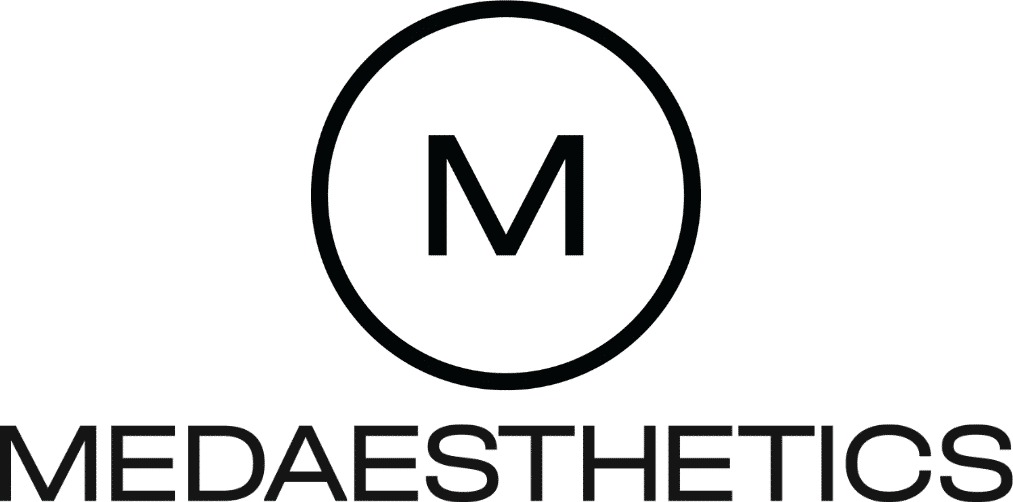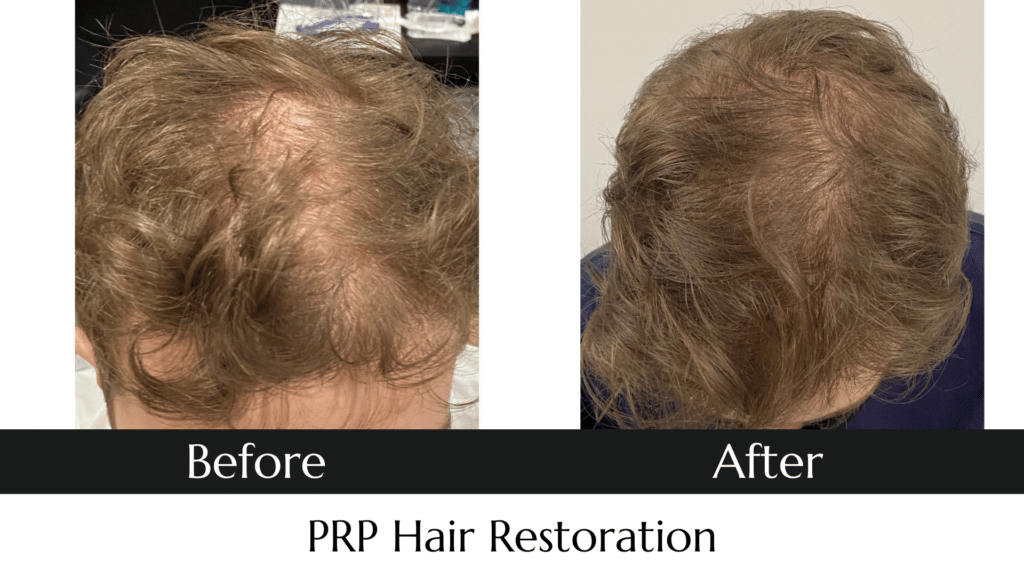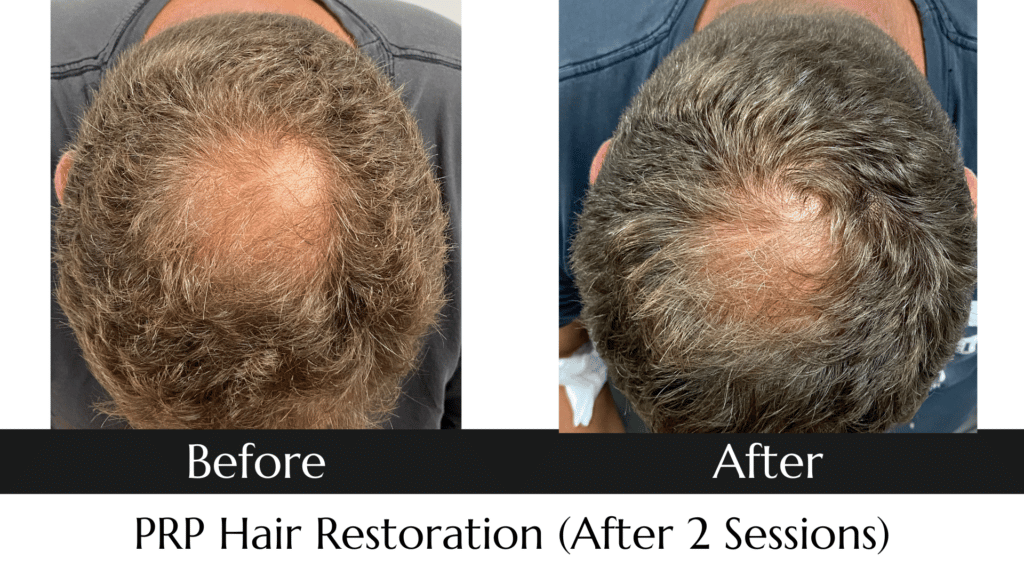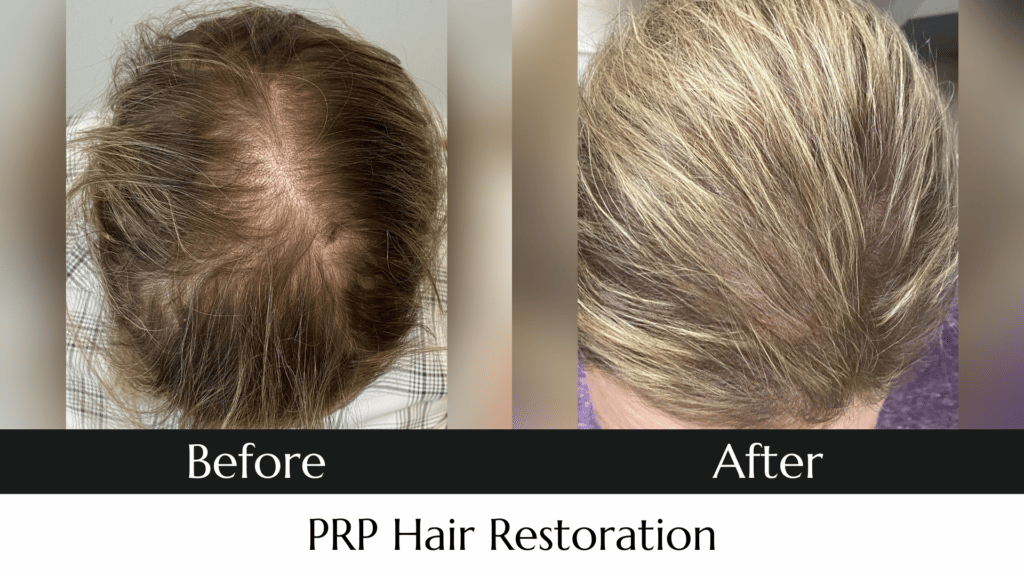We are proud to offer an emergent treatment that has quickly developed a proven track record of success: PRP therapy.
PRP is used to treat those suffering from androgenic alopecia. This is a genetic condition affecting both men and women that causes hair to fall out in predictable patterns. Our Medical Director Dr. John O'Mahony will perform a medical assessment on which type of hair loss you are experiencing to determine if you are the right candidate.
What is PRP?
PRP is platelet-rich plasma, a product that is present in the blood. Platelet-rich plasma is a nutrient-dense fluid that stimulates cellular regeneration within microenvironments like the hair follicles, joints, and also the skin. Platelets are robust cells that contain numerous growth factors, each of which is involved in certain cellular processes.
Platelet-rich plasma has a long history of medicinal use related to tissue healing and regeneration. It is no surprise that this therapy has made its way into the field of hair restoration.
How does PRP work for hair restoration?
The primary purpose of PRP treatment for hair loss is to stimulate activity in the hair follicles. This may prompt an active phase of hair growth in follicles that have become inactive. PRP injections into the scalp may also support the active phase of newly implanted hair follicles. This occurs through the action of various growth factors.
Platelets contain:
- Platelet-Derived Growth Factor (PDGF), which is involved in fibrin formation, blood vessel growth, and cell regeneration.
- Vascular Endothelial Growth Factor (VEGF), involved in the formation of new blood vessels.
- Fibroblast Growth Factor-2 (FGF-2) is also involved in blood vessel formation, as well as the generation of specialized cells that heal and rejuvenate.
- Transforming Growth-Factor-Beta (TGF-b) is involved in bone metabolism in the body as well as matrix formation between cells.
- Epidermal Growth Factor (EGF) stimulates collagen proliferation and cell growth as well as blood vessel formation.
- Insulin-Like Growth Factor – (IGF) provides necessary physiological regulation in nearly every cell.
Behind the scenes, PRP facilitates very sophisticated responses. On the surface, PRP can provide the results you’ve been seeking.
PRP Hair Restoration Treatment
The MedAesthetics technique for PRP hair restoration is to inject platelet-rich plasma into the scalp in the area where hair is thinning. Treatment is conducted with a topical anesthetic which numbs the superficial tissue on the head. After drawing blood, we process the vial in a centrifuge, a piece of equipment that spins the blood to separate platelets from red blood cells. Injections are then administered to the appropriate area of the scalp.
The introduction of platelet-rich plasma into the area of inactive hair follicles stimulates a regenerative process intended to activate dormant growth cycles. Most patients need a series of treatments to achieve optimal results.
How long do PRP injections take for hair restoration?
Injection treatment begins with a brief blood draw that takes less than a minute. The second step of centrifugation takes a few minutes, during which topical numbing medication sits on the scalp. The injection aspect of treatment is meticulous – injections are positioned every half-inch across the area of thinning. As precise as this step is, it usually takes less than thirty minutes from start to finish.
What Happens After the PRP Procedure?
In most cases, there is zero downtime after PRP hair treatment. Because injections stimulate an inflammatory cascade through which tissue is repaired, patients are advised NOT to take any kind of anti-inflammatory medication to manage comfort. Our staff will discuss appropriate medications or strategies to minimize the discomfort that may occur after injections.
How long will it take to see results?
Consistency is crucial to obtain satisfactory results from PRP hair restoration. Treatments are typically scheduled monthly for a few months. Patients can expect to begin noticing improvement within two to three months. After the initial series of treatments, injections are repeated every three to six months depending on individual response and results.
The initial effect that patients may notice after treatment is that they shed fewer hairs. Over time, they can expect to see an increase in thickness and length.
What Are the Advantages of This Procedure?
Platelet-rich plasma is a promising hair restoration product for several reasons. First, PRP is completely organic; it is harvested from the blood. Treatment is safe and convenient, and it works. PRP can be prescribed as the sole form of treatment or it may coincide with traditional therapies ranging from medications such as Minoxidil to hair restoration surgery.
PRP treatment for hair loss may be appropriate for patients with androgenic alopecia at the crown and hairline. Women with alopecia and men and women with diffuse thinning may also achieve desirable results from appropriate PRP techniques.
What risks are associated with using PRP for hair restoration?
The risk of complications from PRP hair treatment is very low. Common side effects include minor discomfort at injection sites, itching, swelling, and dry scalp.
?Hair loss has long been perceived as a normal part of aging. It doesn’t have to be. PRP has demonstrated promising results for people who want to improve the volume and density of their hair. Learn more about PRP hair restoration treatment and what it can do for you. Contact us to schedule your consultation.




